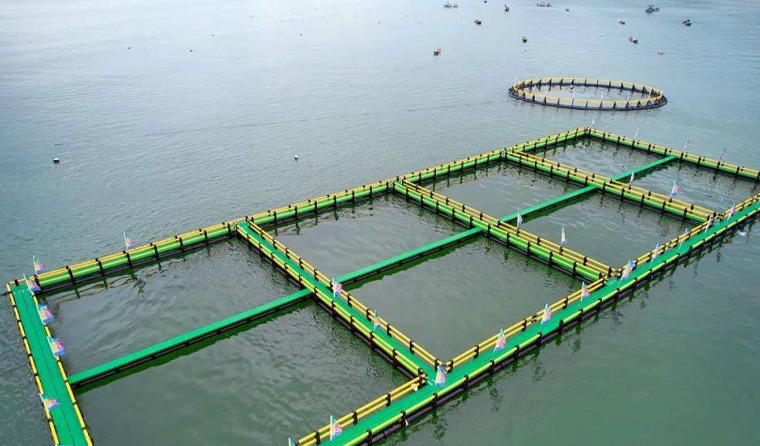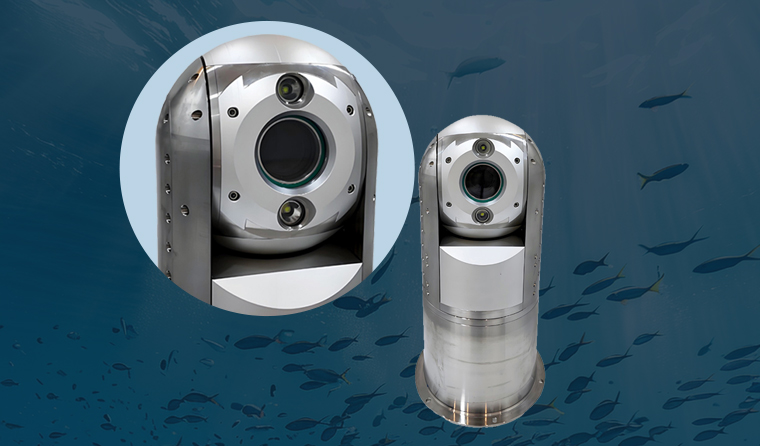Core Functions of Underwater Cameras in Deep-Sea Cage Aquaculture
Hits: 624 Time: September 24,2025

1. Real-Time Monitoring of Fish Schools for Precise Aquaculture
-
Population Dynamic Tracking: With HD imaging and AI recognition technology, it real-time counts the number of fish and their density distribution in cages, accurately distinguishes fish at different growth stages, and avoids imbalance in breeding density caused by manual counting errors. For example, cameras equipped with "fish face recognition" algorithms can record the growth trajectory of individual fish, helping to judge the growth rate of fish and provide data support for adjusting feeding amounts.
-
Abnormal Behavior Early Warning: It real-time observes the swimming and feeding status of fish. If abnormal behaviors such as fish gathering, surface floating, or slow swimming occur, it can promptly warn of problems such as oxygen deficiency and diseases. If some fish are found to be separated from the group or have abnormal body surfaces, it can quickly check whether there is parasitic infection or water quality discomfort, reducing the risk of disease spread.
2. Controlling Cage Environment to Ensure Aquaculture Safety
-
Linked Monitoring of Water Quality Parameters: It can be equipped with sensors for dissolved oxygen, water temperature, salinity, etc., to transmit water quality data in real time. When water quality indicators exceed the safe range (e.g., dissolved oxygen below 5mg/L), the system automatically alarms, helping farmers turn on oxygenation equipment or adjust the cage position in a timely manner to avoid fish death caused by water quality deterioration.
-
Inspection of Cage Structure Integrity: Through the 360° PTZ rotation function, it takes comprehensive shots of the cage netting and frame structure, and promptly detects problems such as damaged netting and loose frames. In the deep-sea environment with rapid currents, damaged netting is likely to cause fish escape or natural enemy invasion. Cameras can reduce the risks and costs of manual diving inspections and improve the efficiency of hidden danger detection.

3. Optimizing Feeding Management to Reduce Aquaculture Costs
-
Visualization of Feeding Status: It clearly observes the feeding activity of fish and the amount of remaining bait, avoiding blind feeding. For example, when it is found that the bait is not eaten in time and sinks to the bottom and rots, the feeding amount can be reduced to lower the risk of feed waste and water pollution, and at the same time avoid fish gastrointestinal diseases caused by overfeeding.
-
Feeding Effect Traceability: It records each feeding process and the feeding feedback of fish, forms a data ledger, analyzes the impact of different time periods and different feeding amounts on fish growth, optimizes the feeding plan, improves feed conversion rate, and reduces aquaculture costs.
4. Remote Management and Data Retention to Improve Management Efficiency
-
Remote Real-Time Monitoring: Supporting 5G or satellite transmission, farmers can remotely view the situation in the cages through computers and mobile phones without frequent trips to the deep-sea aquaculture area. Especially in severe weather (such as typhoons and heavy rains), they can still grasp the aquaculture status in real time, reducing the labor and time costs of on-site management.
-
Data Storage and Analysis: It automatically stores monitoring videos and environmental data, allowing retrospective viewing of historical records, analyzing fish growth laws and water quality change trends, providing data support for the formulation of subsequent aquaculture plans (such as fry release time and harvest cycle), and facilitating large-scale and standardized aquaculture.
For more information about underwater aquaculture camera, please visit the homepage.

